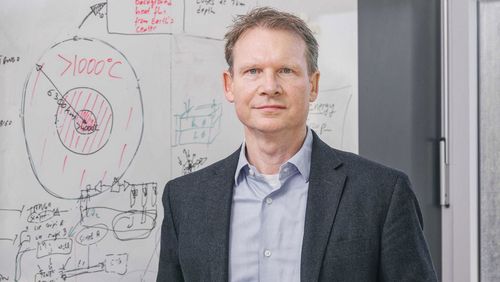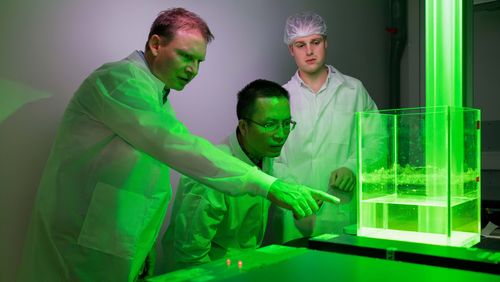
Underground heating
With successfully concluded projects, a major new undertaking and negotiations with industrial partners: geophysicist Martin O. Saar, Werner Siemens Foundation Endowed Chair of Geothermal Energy and Geofluids at ETH Zurich looks back on a busy year.
Renewable energies are the way of the future, a fact that even the most stubborn minds have been forced to concede following Russia’s invasion of Ukraine and the heatwaves of the past summer. For Martin O. Saar, professor at ETH Zurich, the increased interest in his area of expertise—deep geothermal energy—is welcome news. Indeed, massive amounts of energy harboured in the earth’s interior are simply waiting to be used.
Determining the extent of this potential is what Saar and his team are now investigating in a new project funded through a Swiss Innovation Agency “Innosuisse Flagship Grant AEGIS-CH” worth 11.4 million Swiss francs and spanning a period of four years. Saar, who leads the large-scale project, submitted the proposal with colleagues from research and industry. He says it was an honour to be selected, adding that the grant is also important for capitalising on the possibilities offered by deep geothermal energy.
Local geothermal energy plants
The project consortium aims to further develop the drilling method—Plasma Pulse Geo Drilling (PPGD)—which Saar helped to create. Instead of mechanically breaking up the rock, PPGD works with a type of electric shock: electric pulses blast through the rock via tensile force, starting at the bottom and moving up. The innovative technology requires only about a quarter of the energy consumed in standard drilling procedures, making it much cheaper to access geothermal energy at depths of roughly five to ten kilometres.
Saar hopes that the method can be used to build power plants that function much like the heat pumps used in residential buildings: two boreholes are connected at the bottom to create a U-shaped loop or circuit. Inside the loop, heat is extracted from the rock using carbon dioxide as a circulation fluid. The heat is then either used directly or converted into electricity in a power plant and fed into the grid. Saar estimates that a plant capable of extracting the earth’s heat from depths of five to ten kilometres would deliver energy for 500 to 1000 people. These types of power plants could be constructed anywhere in Switzerland—by municipalities, for example—regardless of the specific geological conditions.
Cost-effective carbon sinks
Saar’s second research priority last year was organising a consortium to facilitate pivotal advances in a method he’s developed: CO2 Plume Geothermal (CPG ). Put briefly, CPG is designed to make the capture and underground storage of carbon dioxide cost-effective. When the greenhouse gas is stored between 2.5 and 3 kilometres below ground, it heats up to roughly 100 degrees Celsius. “It’s this heat that we want to tap into,” Saar explains. He envisions a cycle in which the heated CO2 is transported to the surface, where it propels turbines. Afterwards it’s returned to the underground reservoir to ensure that all carbon dioxide is permanently sequestered.
Because CO2 is less viscous than water, the method is two to three times more energy efficient than technologies in existing or planned geothermal power plants, Saar says. He adds that he has contacted several leading firms as potential partners: “They’re very interested, but we need a pilot project to prove the method works.” And this is the precise aim of the new consortium. Saar hopes that work on the pilot can begin in 2023.
Hotspots in Aargau
In 2022, Saar’s team completed their investigations into heat flux distribution in Canton Aargau, where there are “hotspots” with a heat flux density that exceeds the national average. The researchers simulated the underground heat flow on a computer using a novel approach—and thus laid the foundation for drawing up subsurface maps of the entire country. This information will aid public authorities in Switzerland in finding locations suitable for planning geothermal energy projects—and harness clean energy from the earth’s interior.







